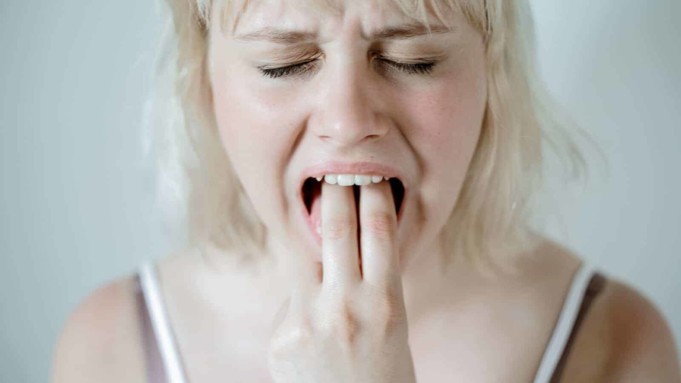Food sometimes is the only thing we can indulge in whenever we are going through certain difficult situations.
For example, chocolate has been proven to improve depression and anxiety symptoms. Also, drinking a cup of warm milk helps you sleep soundly at night.
But what happens when we indulge to the point when we can no longer control ourselves? What happens when overeating becomes a compulsion?
Bulimia nervosa, also known as bulimia, is an eating disorder characterized by binge eating and followed by purging. It is a potentially life-threatening eating disorder with severe consequences on both the psyche and the body.
People in with bulimia may secretly binge – eating copious amounts of food with no control over how they eat – and then purge the food to get rid of calories. The most common forms of purging are by vomiting and with by abuse of laxatives.
Other means of losing calories and preventing weight gain include the use of enemas, weight supplements, fasting for long periods or by excessive exercise. Bulimia is often associated with other mental disorders such as anxiety, depression, and drug and alcohol abuse.
Causes
While people with bulimia may be at a normal weight, many are preoccupied with their weight and body shape.
They may judge their body image too harshly, exaggerating all their perceived flaws. This becomes very difficult to overcome as it affects the sufferer not just physically but also psychologically.
However, genetics sometimes plays a role in the incidence of bulimia. Studies have shown that more than 50% estimated risk of developing an eating disorder is due to genetics.
Bulimia is most common in women – especially young women – but it can also be found in men. Other risk factors include:
- Low self-esteem
- Negative self image
- Obesity
- Psychological stress
- Media portrayal of the “Ideal Body”
- Trauma or abuse
Symptoms
Physical symptoms of bulimia nervosa include;
- Chronic dehydration
- Oral trauma such as lacerations around the lining of the mouth as a result of excessive vomiting
- Electrolyte imbalance which can lead to irregular heart rhythms, cardiac arrest and even death.
- Calluses on knuckles and hands from sticking fingers down their throat to induce vomiting.
- Discolored teeth as a result of stomach acid from excessive throwing up.
- Observable fluctuations in weight.
- Inflammation of the esophagus.
- Stomach cramps
- Peptic ulcer from the wearing out of the gastrointestinal lining.
- Swollen salivary glands
- Dental problems such as wearing out of tooth enamel, cavities and sensitivity of teeth.
- Dizziness
- Muscle weakness
- Compromised immune functioning
- Dry and brittle nails
- Elevated blood sugar and cholesterol levels
- Hypertension
- Diarrhea
- Anemia
Other symptoms that may indicate whether someone is bulimic are:
- Preoccupation with how they look
- Fixation on the amount of calories they consume
- Distorted and unrealistic image of how their bodies should look like
- Suicidal tendencies
- Regular trips to the bathroom soon after eating
- The disappearance of large amounts of food in short periods
- Unscrupulous use of weight supplement pills and laxative
- Compulsive and excessive exercising
- Fasting for periods longer than recommended
- Fatigue or exhaustion
- Extreme mood swings
- Fear of eating in public or with others
- The practice of any new diet fad that promises weight loss
- Withdrawal or isolation from usual activities or friends
- Bloated look as a result of fluid retention
- Excessive use of mouthwash, gum and mint
Diagnoses
Bulimia is commonly diagnosed during adolescence, usually between the ages of 13 and 20 years. People with bulimia are often diagnosed with other affective disorders such as depression, anxiety disorders, and substance dependency.
If you think you or someone you know may have bulimia, it is best to seek help by consulting an eating disorder specialist.
Questions will be asked about your feeding habits, weight, and overall mental and physical health and this will be followed by physical tests carried out on the patient.
The criteria for bulimia listed in the Diagnostic and Statistical Manual of Mental Disorders (DSM-V), published by the American Psychiatric Association will be used to check if the person truly suffers from bulimia.
Treatment
Since bulimia affects both the psyche and the body, treatment occurs by counseling and medication.
Treatment plans are tailored specifically to the individual and it takes into consideration other needs such as depression and anxiety.
The patient will be offered the support of a therapist and may be offered cognitive behavioral therapy which involves teaching a person to challenge automatic thoughts and engage in behavioral experiments.
Medication may also be required for the treatment of underlying mental disorders such as depression. A few tips to recover from bulimia are:
- Break the cycle of bingeing and purging: This may prove difficult at first but it is a necessary step for the patient to take as it restores normal eating behaviors. Since strict dieting influences bulimia, dieting plans should be more relaxed.
- Develop a healthy relationship with food.
- Build a healthy sense of self and improve negative thoughts by challenging dysfunctional thoughts.
- Avoid situations that could trigger a bulimic episode.
- Foster and develop a healthy body image with yourself and even with others.
Recovering from bulimia nervosa is a slow and stressful process that requires careful attention from therapists and love and support from friends and family.
Knowing when to seek help from a counselor or health professional is very important.












